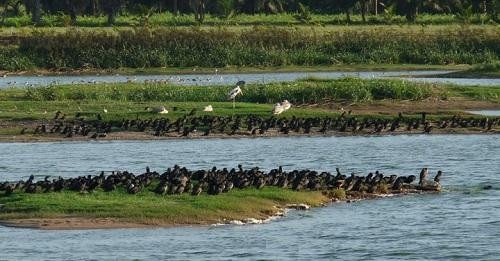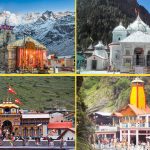#KnowYourRivers
All civilisations originate near river banks. The emergence of civilisation in the name of urbanisation and industrialisation has spoiled the river basins. Rivers are lifeline of human beings, but become dumping and discharging place of urban and industrial wastes. This is the common scenario of all river basins.
Religion World will look at the rivers that call for immediate attention, because they have been polluted beyond repair. But the effort is to look at the river, its history, its use and how it was been brought to the state it is now. Our effort to write about these rivers is to enlighten the readers that they need attention and they can once again turn into lifeline for human race in their part. To start with, river flowing through Coimbatore, Noyyal River, is being featured.
Noyyal River
 The Noyyal River is historically, ecologically and culturally significant river in Kongu region of western Tamilnadu. Noyyal means “devoid of illness” but unfortunately the river has become “ill” and is country’s most polluted river. Passing through the industrial belt of Coimbatore, Tiruppur, Erode, etc, the river has been abused and misused by people and have completely polluted it. There is a definite need to rejuvenate and cleanse the river.
The Noyyal River is historically, ecologically and culturally significant river in Kongu region of western Tamilnadu. Noyyal means “devoid of illness” but unfortunately the river has become “ill” and is country’s most polluted river. Passing through the industrial belt of Coimbatore, Tiruppur, Erode, etc, the river has been abused and misused by people and have completely polluted it. There is a definite need to rejuvenate and cleanse the river.
The river in local language called Kanchimanadhi “Nadhi” means river in Tamil. Earlier civilisation flourished here, and archaeological evidences suggest human settlement along the river even before 1500 BC several historic towns and ancient temples are located along the banks of the Noyyal and its tributaries. It is an integral part of ethnic Tamil culture and was one of the main sources for ecological diversity in the area.
Location and size
The Noyyal River originates in the Vellingiri and Poondi hills and passes through Coimbatore, Tiruppur, Erode and Karur districts of western Tamilnadu before its confluence with the Cauvery River at Noyyal hamlet in Karur district. The Noyyal river basin falls within the latitude 100 56’- 110 19’ north and the longitudes 760 41- 770 56 east. The average width of the basin is 25km the basin is the widest in the central part with a width of 35km the total area of the basin is 3510 square km. The Noyyal is a seasonal river which has a good flow only for short periods during the north-east and south west monsoons.
Must Read : Rally for Rivers – Save Our Soil
Occasionally, flash floods occur when there is heavy rain in the catchment areas. Apart from these periods, there is only scanty flow of water of the year.
Tributaries and river system
The Noyyal river has seven major tributaries Koduvaipudi odai (odai means stream), Mullurambuodai, Mudhanthurajaodai, sundaramodai, pachaanvaikal and kanchimanathi. All these tributaries and their lower order streams start from the foot of the Western Ghats. On river Noyyal along its course a number of anaicuts are present.
The first anaicut is Chithiraichavadi anaicut, which is currently almost 95 percent silted that has reached the crest level. All the streams get flooded during rainy season, damaging the banks. Since the catchment area at the upper reaches is steep with high slope water flows with great velocity causing serious erosion.
Also Read: Art of Living Starts Naganadi River Rejuvenation
In the Noyyal river system, there are 30 ponds and 14 canals most of which were constructed during the Chola period. All the supply canals, ponds and the Noyyal river basin collectively irrigate a cultivable land area of 258,834 hectares including a ground water irrigation area of over 30,000 acres. There are 55 small check dams in the entire course of the Noyyal. Although 25 tanks are found along the course of the Noyyal, there are 6 major tanks located in our study area; they are Mangalam tank, Andipalayam tank, Mannarai tank, Orathupalayam reservoir, Kattagani tank and Athupalayam reservoir.
Origin and Flow
The Noyyal River originates from Western Ghats. The main rivers which make up the Noyyal river are Periyar, Sadiyar and Kanchimanadhi. The rivers Periyar and Sadiyar, both originate from South-West hills of the horse-shoe shaped mountains in the west of Coimbatore and joins at Sadivayal to form Chinnar.
The river Anaiyar, originates from the central portion of the hills and also carries the Siruvani water transported through the tunnel near Mylone Bungalow to the Treatment Plant. Siruvani water is being diverted from Anaiyar river through a sluice just 100meters west of the treatment plant. The Anaiyar river continues and joins with river Periyar (Kovai Kutralam.)
Finally at Solaipadugai, Chinnar & Periyar confluences. This confluence takes place adjacent to the reserve forest and the Kanchimanadhi joins with Periyar at Kooduthurai in Alandurai Village.
Streams
In addition to the above said major tributaries, there are about 36 streams/rivulets which strengthens the River Noyyal from either side, starting from the origin, all the way up to Coimbatore. Out of the 36, 24 streams/rivulets originates from Southern Hills, and flows from South to North to the River Noyyal and the remaining 12 streams/rivulets originates from Northern Hills flows from North to South to join with the river. The average length of each stream range from 7 to 12 kilometers.
River Topography
The Noyyal River has three distinct topographic segments: the slopes and valleys in the Western Ghats, a well-drained region; the lower catchment area in the flat plains; and the eastern Noyyal river basin which is fairly flat or gently undulating. The principle climate type of the river basin is semi-arid subtropical monsoon. In the western part, the climate is pleasant due to the winds rushing through Western Ghats pass, while the eastern part is comparatively hotter. The hot months of March, April and May are followed by the south west monsoon season that starts in June and continues up to September. October and November constitute the North east monsoon. December to the first half of February is the winter or the coolest season.
जरूर पढे़ं – गंगा को कैसे बचाया जाए, स्काटलैण्ड से 21 वैज्ञानिक शोध के लिए भारत में
River & the Man
The Noyyal River has a long and illustrious history as a river influenced by man, which is indicated by the many tanks and canals. Several civilizations have flourished around its banks throughout history. The present tank and canal system is very different from the one that existed before the start of urbanization.
Today, the basin appears to be fully exploited, having 23 anaicuts, 30 system tanks, 20 channels and two reservoirs, Orathupalayam and Authupalayam, were constructed for irrigation.
The Noyyal River is important for the rural people who live along its banks. The river provides water for irrigation and potable water for livestock and people. It is also believed that the water contains natural medicines and is therefore good for health. Along long stretches of the river this is not true anymore due to industrial and domestic pollution.

Although Noyyal means “devoid of illness” but the river has become “ill”. It is today one of India’s most polluted river. The water originating from the hills is tasty and sweet, but soon the quality changes, as much of the household wastes from the urban settlements are dumped into the river. Adding to this, there are a large number of industries, especially hosieries and tanneries in and around Coimbatore and Tiruppur, the industrial majors of the Noyyal basin that discharge their effluents into the river.
Major crops in Uthukuli, Chennimalai blocks and downstream of river Noyyal are maize, sorghum, cotton and tobacco. Crop types and its cultivated area in various block of the Noyyal basin, other crops such as coconut, areca nut, sugarcane, Paddy, etc are important crops in Thodamuthur, Perunthurai, Madakurichi and Kodumudi blocks.
Religion World is one and only indian website to give information of all religions. We are dedicated to report on all aspects of religion. You can send any info, news, engagements and advice to us on – religionworldin@gmail.com – or you can WhatsApp on – 9717000666 – we are also on Twitter, Facebook and Youtube









